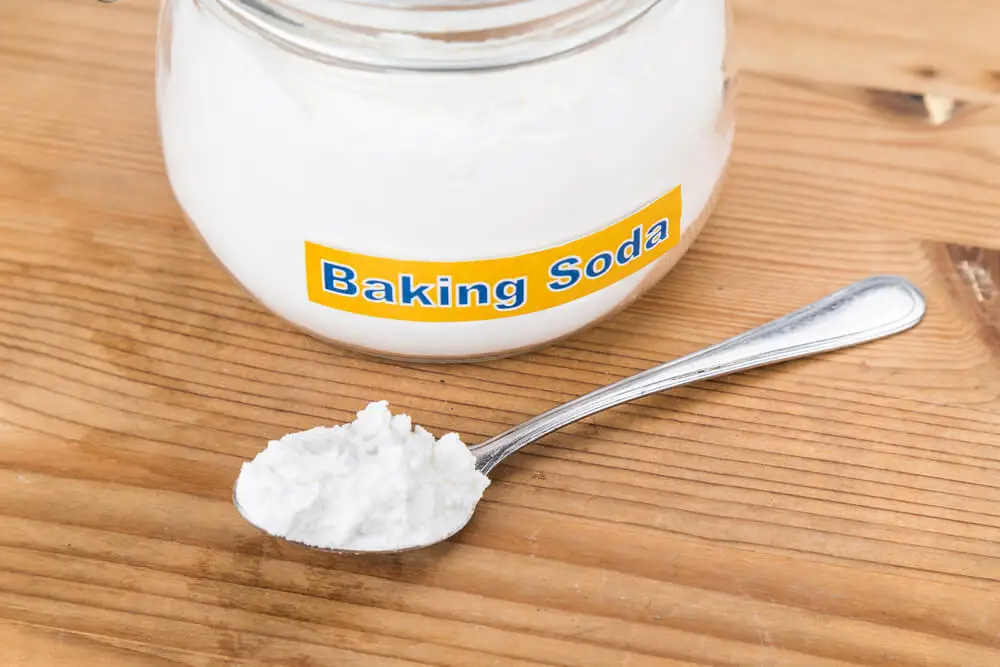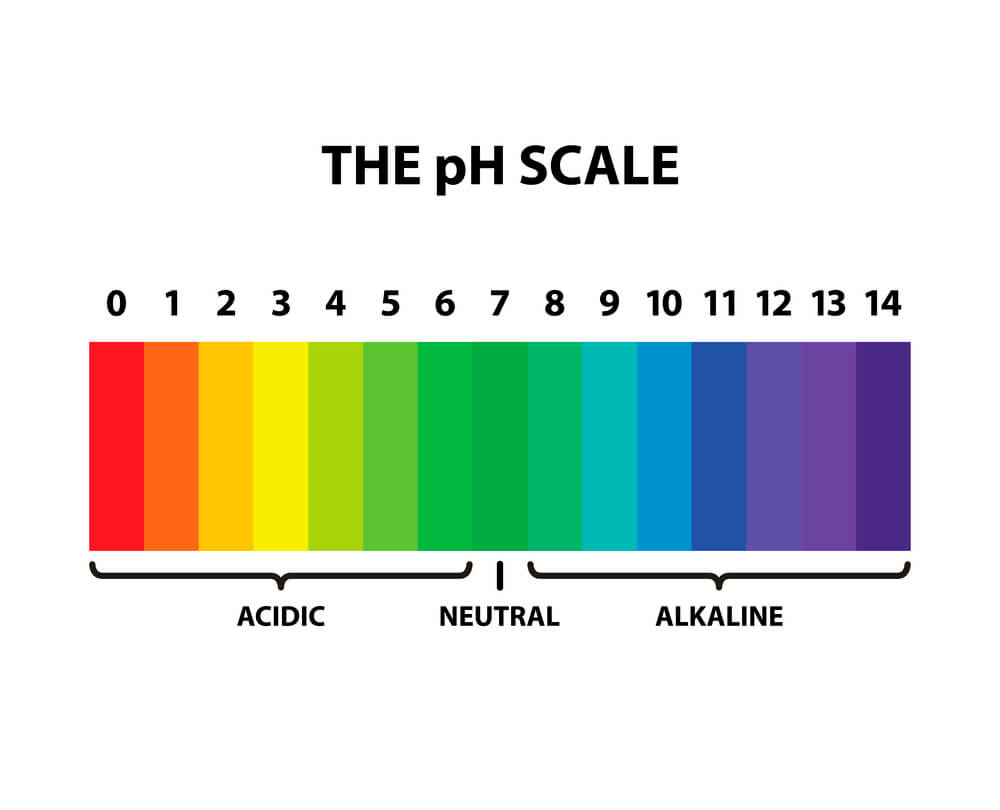It’s important to have the right pH levels in your soil to have healthy plants. The level of acidity or alkalinity in your garden can affect the availability of essential nutrients your plants need to grow healthy.
That’s why it’s important to know your garden’s soil pH levels before planting anything.
According to Almanac.com most plants do well when the soil pH is between 6.0 -7.5, but you need to know the plants you’re growing and what they need.
Some plants thrive well in alkaline conditions than acidic conditions and a soil test will help you know your current pH levels.
An easy and organic way of raising the pH in the soil is to use baking soda. It’s the fastest, most affordable, and effective way, and it only takes a few days to see the results.
It’s gentle on the soil and plants so you don’t have to worry about harming your plants. You just mix a tablespoon of baking soda with a gallon of water, but you can reduce or add this amount depending on the size of your garden.
Be careful not to use too much baking soda to avoid creating an imbalance in the soil.
Method on How to Raise pH in Soil With Baking Soda
There are many methods you can use to raise the soil pH, but baking soda is not only useful in cooking and cleaning, but it’s also helpful in your garden.
Since you already have baking soda in your home, you don’t need to make any investments to raise the soil pH levels. This is a convenient solution when you need a quick fix.
Step 1: Determine the soil pH
Test the soil pH levels using a pH meter or a pH test kit like the one above and follow the simple instructions so you can know whether to increase or decrease the pH levels.
You can send a soil sample to the lab or do a simple homemade pH test using vinegar and baking soda.
Take two separate soil samples from the same spot, add distilled water, and stir. Add a tablespoon of baking soda in one and stir and if it bubbles your soil is acidic.
Add the same amount of vinegar to the other sample and stir and if it starts to foam your soil is alkaline. If both tests don’t produce any results, your soil is neutral.
Step 2: Add baking soda
If you need to raise your soil pH, you’ll need to add baking soda and the best way is to mix it into the soil before planting. You can also use baking soda on already growing plants.
To achieve the best results, mix a tablespoon of baking soda with a gallon of water depending on the size of your garden. Then apply the mixture into your soil then till your land to mix it well. Add this mixture a few months before planting so it settles and stabilizes.

Step 3: Water Regularly
You’ll need to water your garden very well to activate the baking soda.
However, don’t overdo it to avoid washing away the baking soda and other essential nutrients in the soil as well.
Since tap water is alkaline, it can also help in raising the soil pH levels.
Step 4: Check the pH levels
After applying baking soda, check to see if there are any changes.
If you’ve used the right amount of baking soda you should see a rise in the pH levels even after a day.
Keep testing and adjusting the pH levels after a few months to achieve the desired results for healthy plant growth. Also, check your soil after heavy rains and when adding fertilizer because it can affect the soil’s pH levels.
Alternative Ways of Raising your Soil’s pH
Apart from using baking soda, there are other ways you can raise the pH levels in your soil.
Lime or limestone
Raising the soil’s pH is often referred to as liming because the compounds mostly used contains lime.
Lime helps to add magnesium and calcium into your soil and it reacts with the soil to reduce the solubility of manganese and aluminum, elements that lower your soil pH levels.
Liming materials come in different forms that include calcitic lime that contains calcium carbonate and dolomitic lime that contains high amounts of magnesium carbonate.
You can either use these liming materials as an application that you put on the soil surface, which will only change the pH of the top inch of the soil, or mix it into the soil.
Since these materials have limited solubility, you’ll need to raise your soil pH quickly before tiling your land.
You should give lime enough time to react before planting or add water to quicken the reaction because it reacts slowly with dry soil.
Wood ashes
Wood ash is also a perfect choice and a more natural and organic way of raising your soil pH levels, although it will take longer and it’s not as effective as baking soda.
However, it will add some essential micronutrients into your soil that include calcium, phosphate, potassium, and boron.
Add the wood ash in thin layers and for every square yard, use 2 ounces of ash.
Although it doesn’t have a quick reaction like baking soda, with time it will drastically increase your soil pH so you need to keep a close eye on your soil.
However, wood ash can damage the germinating plants and roots in your garden, so make sure the ash doesn’t come in contact with them.
The best time to use wood ash is during winter and give it a month or two to work before planting to avoid plant damage. It’s best used only when your soil pH is below 6.5 and it gives great results on sandy soils.
Although this method is highly effective when done properly, it’s very easy to oversaturate the soil with ash, so if you add more than 2 pounds of wood ash on a 100 sq. feet area per year, you can interfere with your plant’s ability to absorb nutrients.
Soil types and their pH levels

The soil pH scale number ranges from 1.0 – 14.0 with any value below 6.5 indicating the acidity level of the soil so the lower the value the more acidic your soil is.(Source)
Values higher than 7.0 show the alkalinity of your soil with a higher number being higher alkaline levels.
Soil type | Features | pH levels |
Clay soil | Tiny soil particles that pack tightly together and hold in moisture and nutrients, but limit the proper flow of oxygen, nutrients, and drainage | Tends to be slightly alkaline |
Sandy soil | Ground rock particles that don’t hold moisture or retain vital nutrients that plants need to grow | Depending on the rock particles and other soil matter, the pH can be acidic or slightly alkaline |
Silty soil | Very fine and soft particles | pH can vary from slightly acidic to slightly alkaline |
Loamy soil | A balanced mix of silt, clay, and sand soils. It drains well and is high in nutrients | pH levels will vary from acidic to alkaline |
Chalky soil | Found in heavy lime formations, dries out quickly in hot weather and requires frequent watering | Alkaline |
Conclusion
Changing the soil pH in your garden can give you varying results which can result in your plants flourishing or having poor growth.
Using baking soda in the correct way to raise your soil pH is not only cheap and effective, but it’s also organic so you don’t harm your plants in the process.
This will go a long way in making your plant flourish.
Aslo read
How to Kill Crabgrass with Baking Soda – Complete Step by Guide
How deep does grass roots grow?
Sources and Further Reading
